The popular Samsung EVO Plus memory card line is now, finally, available in the UHS-I SD card form factor. Ranging 32GB to 256GB, the Samsung Evo Plus (U3, Class 10) is more economically-friendly than the new Samsung PRO Plus, as they are meant for everyday consumer use in digital cameras. All cards feature the SDXC format except the 32GB model, which is designated as SDHC. It’s been a while since we’ve seen an update to the company’s SD card line (or from any company for that matter), so let’s get right in to see what the new Plus cards offer.
The popular Samsung EVO Plus memory card line is now, finally, available in the UHS-I SD card form factor. Ranging 32GB to 256GB, the Samsung Evo Plus (U3, Class 10) is more economically-friendly than the new Samsung PRO Plus, as they are meant for everyday consumer use in digital cameras. All cards feature the SDXC format except the 32GB model, which is designated as SDHC. It’s been a while since we’ve seen an update to the company’s SD card line (or from any company for that matter), so let’s get right in to see what the new Plus cards offer.
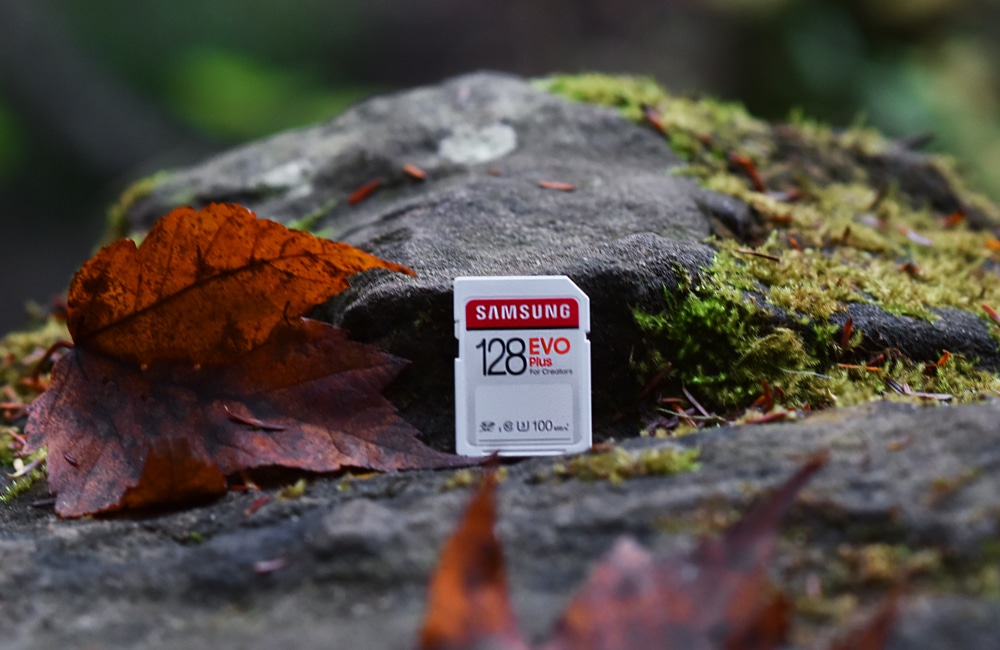
As far as performance goes, the new Samsung EVO line is identical to the PRO version in terms of read speed, quoting up to 100MB/s for all capacities. Where the two models differ is in write performance, with Samsung indicating 20MB/s write for the 32GB and 64GB models, and 60MB/s write and 80MB/s write for the 128GB and 256GB models, respectively. This means only the two higher-capacity EVO versions support full 4K UHD video recording (where as all capacities of the Pro line support it).
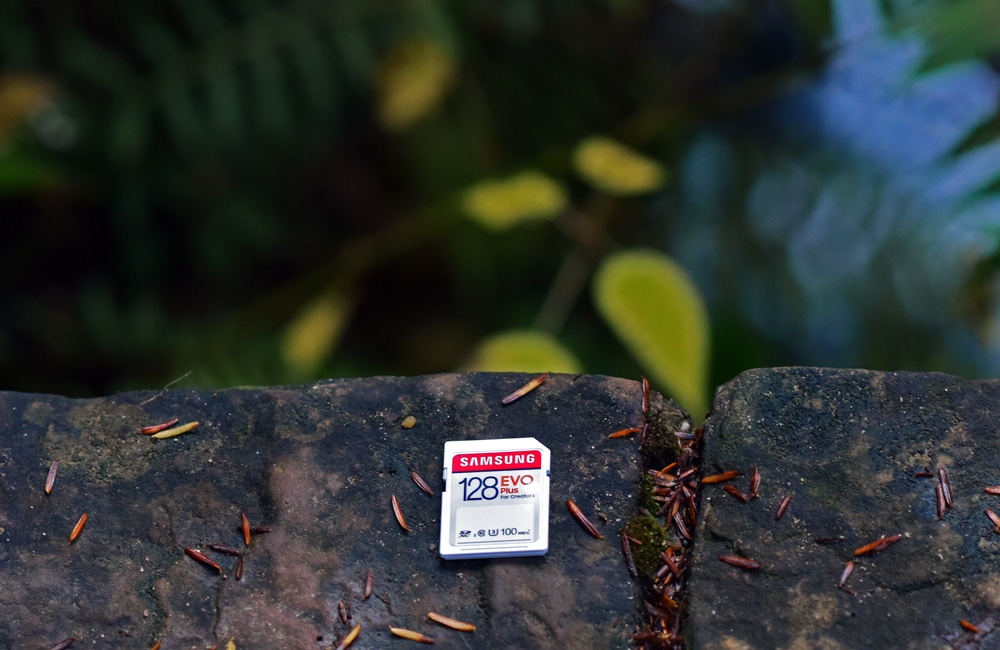
Like with the Pro line, the SD card iteration of the Plus line is more or less the same as its microSD counterpart, which was released well over a year ago. That said, Samsung added some additional durability features, as they are now drop-proof up to five-meters (the industry standard is only 2-3 meters) and wearproof up to 10,000 swipes. The latter feature is when a user pulls the SD card out from the camera, inserts the card into another device into a computer (or reader) to transfer the data, then puts it back into the camera. The EVO line offers the usual resistance to extreme weather and the elements, including water, high/low temperatures (-13°F to 185°F), x-rays, magnets, and shocks.
Backed by a 10-year warranty, the new Samsung Evo Plus line is available in capacities of 32GB ($7), 64GB ($13), 128GB ($20) and 256GB ($40), which is a price difference between 35% to 22% less than the Pro version. We will be looking at a 128GB version in this review.
Samsung Evo Plus specifications
|
Hardware Information |
Form Factor | SDHC, SDXC | |||
|
User Capacity |
32GB | 64GB | 128GB | 256GB | |
| 31,998,345,216(Bytes) | 63,988,301,824 (Bytes) | 128,010,158,080 (Bytes) | 256,020,316,160 (Bytes) | ||
| Bus Speed
Mode |
UHS-I SDR104 | ||||
| Dimensions | 32 x 24 x 2.1 (mm) (L x W x H) | ||||
| Weights | Approx. 1.75g (Card only) | ||||
|
Performance |
Speed Class | Class 10 | |||
| Speed Grade | Grade 1 (U1) | Grade 3 (U3) | |||
| Sequential (Read) | Up to 100MB/s | Up to 100 MB/s | Up to 100 MB/s | Up to 100 MB/s | |
| Sequential (Write) | Up to 20 MB/s | Up to 20 MB/s | Up to 60 MB/s | Up to 80 MB/s | |
|
Reliability |
Temperature |
Operating: -25°C to 85°C | |||
| Non-Operating : -40°C to 85°C | |||||
| Durability | 10,000 mating cycles | ||||
| 7-Proof Features4) | Water-proof, Temperature-proof, Shock-proof, X-ray-proof, Magnetic-proof, Drop-proof, Wearout-proof | ||||
| EMC Certifications | FCC, CE, VCCI, RCM | ||||
| Warranty | 10 year limited | ||||
Samsung Evo Plus design and build
The new Samsung Evo Plus SD cards look pretty much like their microSD Endurance cousin: a mainly all-white design with red Samsung branding at the top. Just like the Pro, this is a very slick, modern design.
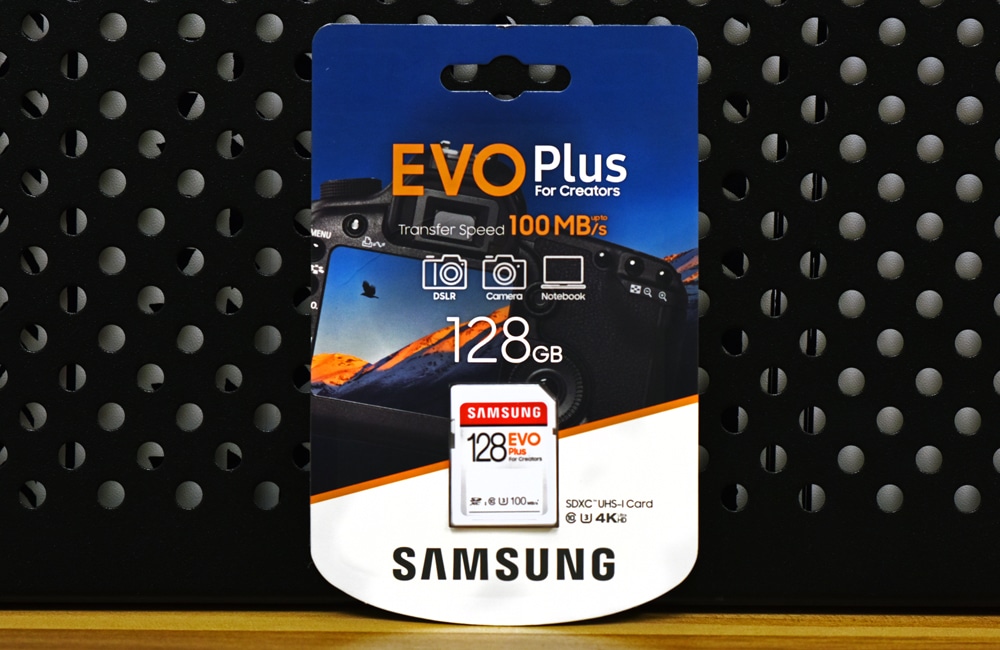
It also features the capacity, performance speed numbers, and “For Creators” under the logo to indicate who the card is for, while the designations displayed along the bottom.
Samsung Evo Plus performance
To gauge the performance of the Samsung Evo Plus SD memory card, we put it through two tests: Blackmagic software and IOMeter, both of which were done on our Lenovo X1 Extreme through a Lacie 1big Dock SSD Pro TB3 dock.
In Blackmagic, the Samsung Evo Plus posted 90.7MB/s read (which was noticeably better than the Pro version) and 61.5MB/s write.
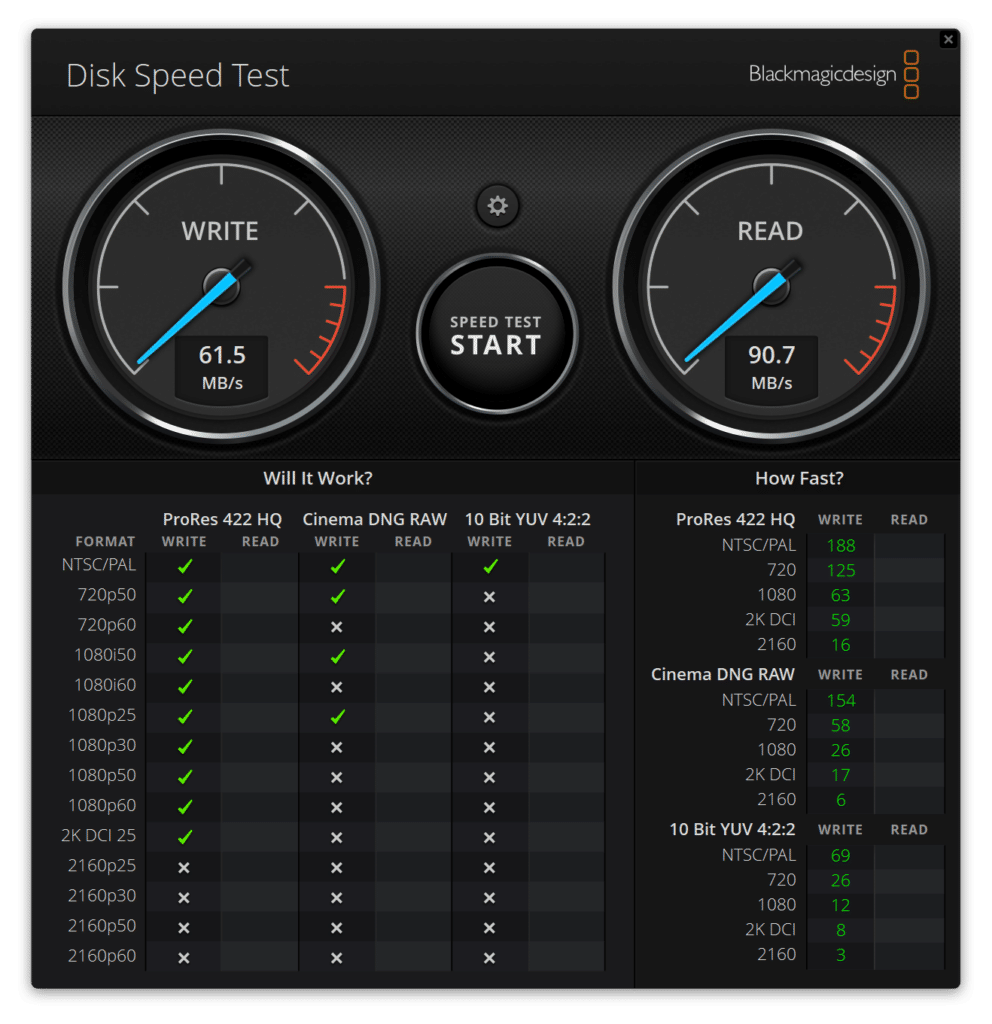
Turning to IOMeter, we measured 1 thread performance. Here, the Samsung Evo Plus reached 89.0MB/s read and 60.7MB/s write in 2MB sequential while posting 82.3MB/s read and 53.0MB/s write in 2MB random. Looking at 4K random performance, the new Samsung Evo Plus hit 459.4 IOPS read and 275.4 IOPS write. Overall, the EVO performed surprisingly better in read performance compared to the Pro version, though expectedly fell behind in writes.
Conclusion
It’s been a while since we’ve seen a new memory card release from Samsung, but the results and features of the new Evo Plus line were pretty much on par with previous iterations. As such, the Evo Plus SDXC card features decent performance as well as protection against water, shock, magnet, X-ray, and extreme temperatures. The new Evo release has also been newly designated as drop-proof up to five-meters and wearproof up to 10,000 swipes. It’s not really clear what the rating would have been in the older Plus models, but now Samsung has now given its official numbers.
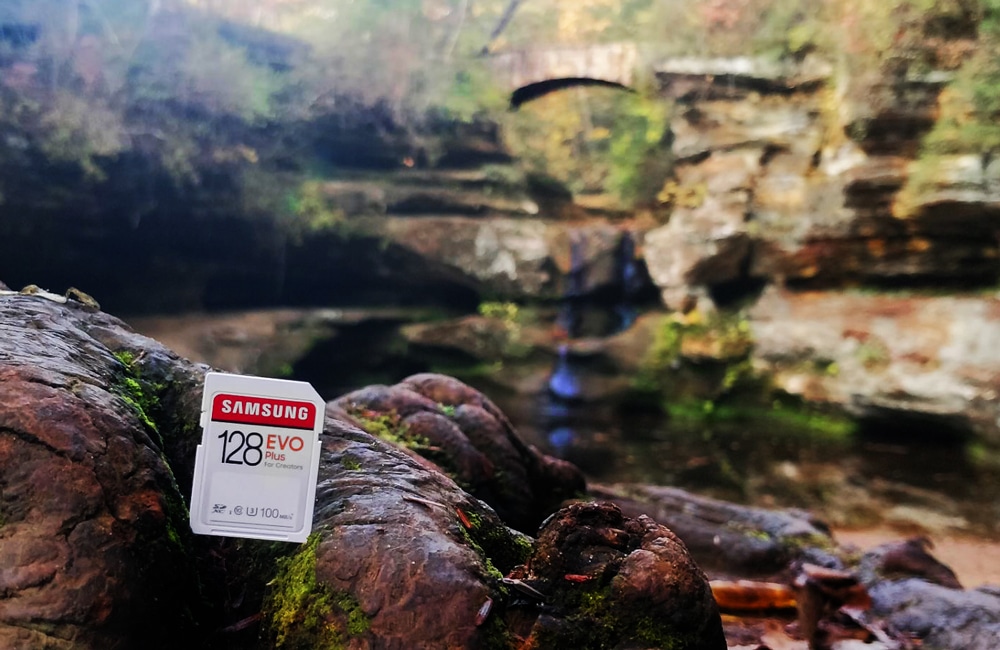
For the details of its performance, the new Evo Plus showed similar numbers (though with weaker writes) as it did back in 2017 with the microSDXC release. In our BlackMagic test, it showed 90.7MB/s read and 61.5MB/s write. For IOMeter, the Samsung Evo Plus hit 89.0MB/s read and 60.7MB/s write in 2MB sequential while posting 82.3MB/s read and 53.0MB/s write in 2MB random.
Overall, the new Samsung Evo Plus SD cards are a solid release from the memory company, even though not really much as changed since the 128GB microSD version was released over two years ago. Nonetheless, the SD card offers an excellent dollar-per-GB ratio, with the smallest capacity model (32GB) going for just 7 bucks and the highest capacity model (256GB) for $40. Coupling all of this with Samsung’s massive 10-year warranty and durability features makes it a great choice for general users who need reliable storage for their digital cameras or other consumer-grade devices that still use the SD form factor.
Engage with StorageReview
Newsletter | YouTube | Podcast iTunes/Spotify | Instagram | Twitter | Facebook | RSS Feed
